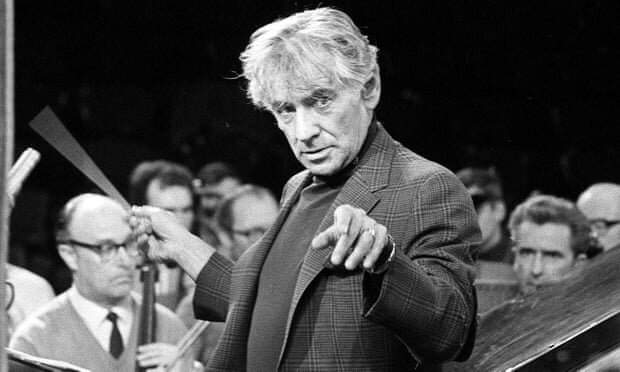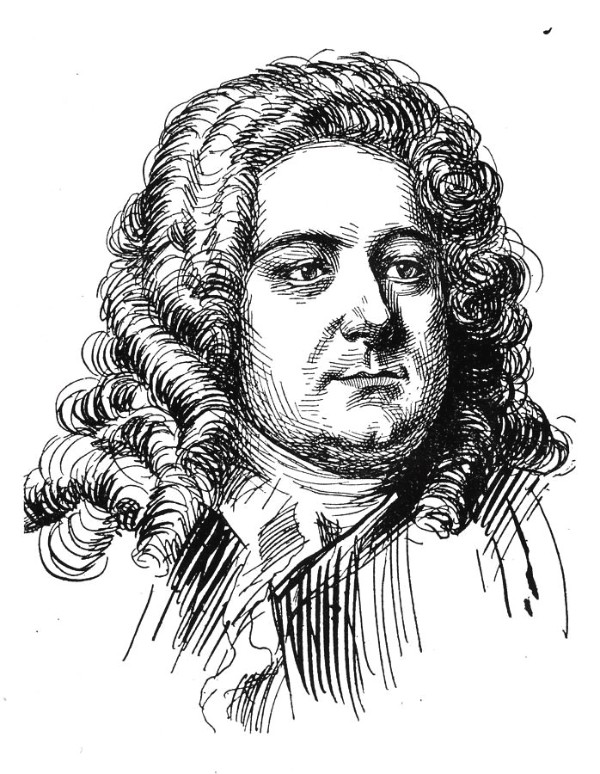Composer, conductor, pianist, teacher, and all-around American musical legend Leonard Bernstein gave thousands of performances over the course of his career, many of which were broadcast and archived for future generations to enjoy.

Leonard Bernstein conducting rehearsals at London’s Royal Albert Hall, for the Igor Stravinsky Memorial Concert. © PA/EMPICS
Bernstein – a boyishly handsome, gregarious force of nature – was magnetic on a television screen and set new standards for classical musician charisma in the mid-twentieth century.
Today, we’re looking at the five most popular Bernstein performances on YouTube, going from least viewed to most viewed. We’ll be looking at the story behind each performance and what makes each one so special.
5. Keyboard Concerto No. 1 in D minor by Johann Sebastian Bach
3.7 million views
This clip is from a performance that aired on CBS in America in 1960 as part of the educational Ford Presents series.
Bernstein starts out by giving a spoken word introduction, pointing out to the audience the lack of performance instructions in Bach’s original manuscript.
Bernstein sits down at the piano and plays a passage straight, without any variation in tempo or volume, and proclaims it “unutterably dull.”
He then plays it again, adding interest by employing a crescendo and decrescendo. This, he explains, is only one way to mold the music. Listen, he says, to the innumerable ways in which Glenn Gould adds interest to the bare score.
Modern listeners might recoil from this performance. The forces used are very unlike what Bach would have heard or imagined. A modern grand piano sounds very different and behaves very differently from a harpsichord. Bernstein also made no adjustments to the proportions of players in each section, resulting in a string-heavy orchestral sound.
And yet, the result is still mesmerizing. Gould’s silky, even tone and his obsession with the smallest details of articulation are deeply satisfying in this repertoire.
The camerawork is also fantastic. We get closeups of Gould’s pedaling, his ecstatic face, views from far above the keyboard, and shots of Bernstein’s cuing various sections of the orchestra.
Two years after this performance, Gould and Bernstein gave their most famous joint performance: a reading of Brahms’s first piano concerto. Gould wanted to play the opening movement at half tempo. Bernstein respected him enough to agree to try. The change in tempo was so drastic that he gave a kind of disclaimer at the top of the performance. It was interpreted by many as an attack on Gould’s artistry – an attack that Bernstein later said he never intended.
Here’s a recording of that broadcast if you’re interested in more Bernstein/Gould content:
4. Excerpt from The Unanswered Question lecture series
4.4 million views
Leonard Bernstein was not just a composer and conductor; he was also a full-blown educator, so it’s fitting that one of his most frequently viewed performances is not actually a musical performance at all, but rather an excerpt from a college lecture.
In the early 1970s, Bernstein returned to his alma mater, Harvard, to give a series of talks, which were later turned into a book called The Unanswered Question.
In this excerpt, Bernstein explains his view of how different intervals first appeared in human history. Octaves, he theorizes, came from the differences between male and female voices. The fifth then entered into the human musical vocabulary. When the fourth was added around 900 AD, musicians began mixing the three intervals, resulting in the beginning of polyphony.
Bernstein also demonstrates how adding thirds and triads to the mix provided the final ingredient for tonal music.
He then demonstrates how the circle of fifths was built and how modulations can occur from one key to another.
More than one comment in the YouTube comment section remarks how astonishing it is that Bernstein was able to summarize a semester or even years’ worth of study over the course of just six minutes.
Whether you agree or disagree with the ideas Bernstein sets forth here, it’s impossible to deny his enthusiasm and gift for verbalizing complex ideas.
3. Piano Concerto No. 5 by Ludwig van Beethoven
5 million views
Leonard Bernstein began conducting the Vienna Philharmonic regularly in 1966. This performance with pianist Krystian Zimerman dates from September 1989, the last full concert season that he spent on the podium. (A year later, in October 1990, he would announce his retirement from conducting, then die of a heart attack five days later.)
Bernstein had just turned seventy-one, and you can start to see it. He is not nearly as bouncy as he had been as a young man. It’s clear that he’s relying on his long history with the orchestra – and the orchestra’s long history itself – to communicate his ideas to the players.
A listener can tell that Bernstein is one of the last vanguards of a certain style of Beethoven orchestral playing: unrelentingly smooth, easy, and noble.
In his later years, Bernstein expressed interest in the newer styles of historically-informed playing that were gaining prominence in the 1970s and 1980s, but he never got a chance to fully incorporate those ideas into his own performances.
The result is a lovely recording that feels like a bookend to the so-called Golden Era of orchestral performance and recording.
2. Rhapsody in Blue by George Gershwin
7.4 million views
Because of his many other talents, it’s sometimes forgotten that when he was in practice, Bernstein was an impressive pianist.
In this performance from Royal Albert Hall, Bernstein conducts from the piano and plays the solo part. The performance dates from 1976, a season that saw a great deal of emphasis placed on American music and American composers, given that it was the bicentennial anniversary of the signing of the Declaration of Independence.
Bernstein’s conception of the Rhapsody here is relatively introverted, conveying an air of wistful sophistication and relaxed joy. The easy satisfaction with which he attacks the keyboard at 4:35 is especially heartwarming.
One interesting element of this particular performance is that Bernstein’s back faces the audience instead of the first violins, as is the common concerto position. In the absence of a separate conductor, this position allows the first desks of the string players to be extremely physically close to the soloist and makes it easier for him to communicate with them.
1. America from West Side Story by Leonard Bernstein
7.4 million views
And here it is: the most popular Leonard Bernstein video on YouTube.
The timeless musical West Side Story is probably Bernstein’s best-known and most enduring contribution to American culture.
In the 1961 movie version of the song “America”, the character Anita sings about the positives of life in mid-century America, while the more cynical Bernardo reminds her of all the downsides, such as racism and prejudice. It’s a timeless conversation that is relevant even today.
As a bonus, here’s how the song was reinvented in the 2021 movie version…proof that decades after his death, Bernstein’s legacy is just as vital as ever:
For more of the best in classical music, sign up for our E-Newsletter


Bernstein’s AMERICA seems to have been toned down for the movie version. The lyric on the Original Broadway Cast is spicier. Sondheim at his best.